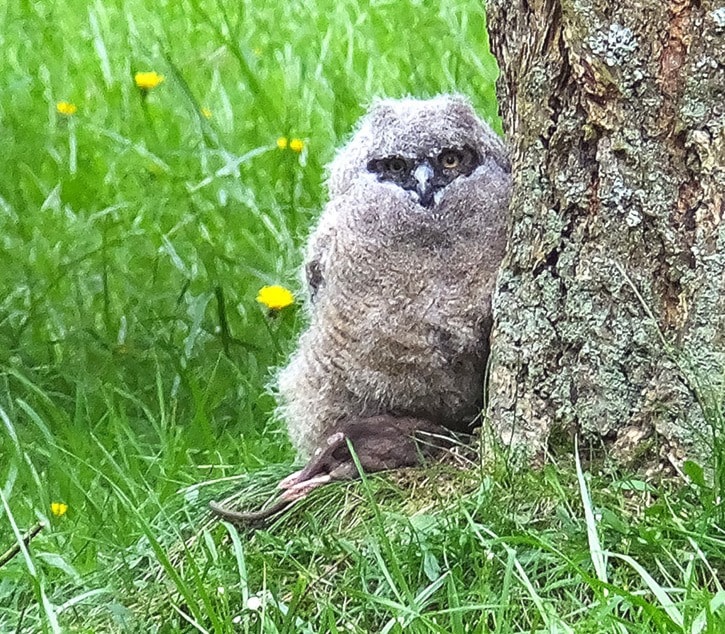Its stares are intense but the great horned owlet that’s been spotted on a South Surrey farm in recent weeks is not the raptor to be wary of – not yet, at least.
A horse that ventured a little too close to the youngster learned that the hard way, when the little dude’s – or gal’s – parents launched a defensive strike, a neighbour who has been monitoring the owlet’s “amazing” progress from afar said.
Ever since, “horse refuses to go anywhere near that area,” said the woman, who asked not to be identified in order to protect the owlet and its family’s location.
“We do not want them harassed or too many people gawking at them making them nervous,” she explained.
 The owlet was spotted about 2½ weeks ago, in a field near a Douglas fir, and has been a source of delight for a few nearby residents ever since. They’ve watched it grow from “a ball of fluff.”
The owlet was spotted about 2½ weeks ago, in a field near a Douglas fir, and has been a source of delight for a few nearby residents ever since. They’ve watched it grow from “a ball of fluff.”
“I get to see this baby owl every day,” the neighbour said. “At first, his mom was there most of the time. Now, you don’t see her. He’s starting to work his wings.”
News of the owl family’s discovery did not surprise Martina Versteeg, bird-care supervisor at Owl Wildlife Rehabilitation Society (OWL).
“Great horned owls are the most wide-spread owls in North America,” Versteeg told Peace Arch News last week, describing the birds of prey as “very tough.”
“He should start to fly pretty shortly.”
The property owner where the family was found did reach out to OWL to ask if the owlet might need rescue, the neighbour said. But, hearing that it was growing and moving well, and that its parents had been seen watching over it, she was advised to simply let things be.
Versteeg confirmed that unless a creature is injured, unwell or in a location where it could be easily preyed upon, it is best to not intervene.
“If there’s two parents around… that’s a perfect little environment for them,” she said. The young “usually fledge and fly (at) eight to 12 weeks.”
For anyone interested in learning more about owls and other birds of prey, Versteeg encouraged a visit to OWL’s Delta facility later this month, during their spring open house.
From 10 a.m. to 3 p.m. April 25 and 26, the 3800 72 St. centre will offer public tours, kids activities and raffle prizes. As well, each day at 1 p.m., a rehabilitated raptor will be released.
For more information, visit www.owlcanada.org or call 604-946-3171.
